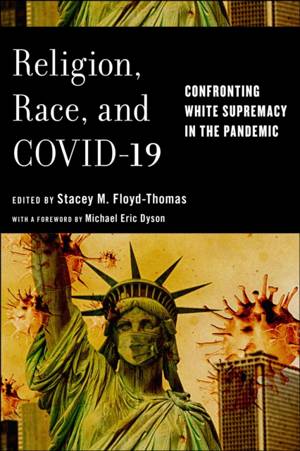
- Afhalen na 1 uur in een winkel met voorraad
- Gratis thuislevering in België vanaf € 30
- Ruim aanbod met 7 miljoen producten
- Afhalen na 1 uur in een winkel met voorraad
- Gratis thuislevering in België vanaf € 30
- Ruim aanbod met 7 miljoen producten
Zoeken
Religion, Race, and Covid-19
Confronting White Supremacy in the Pandemic
€ 150,95
+ 301 punten
Omschrijving
Examines how the dynamics emerging from the pandemic affect our most vulnerable populations and shape a new religious landscape
The COVID-19 pandemic upset virtually every facet of society and, in many cases, exposed gross inequality and dysfunction. The particular dynamics emerging from the coronavirus pandemic have been felt most intensely by America's most vulnerable populations, who are disproportionately people of color and the working poor, the people whom the Bible refers to as "the least of these." This book makes the case that the pandemic was not just a medical phenomenon, or an economic or social one, but also a religious one. Religious practice has been altered in profound ways. Controversies around religious freedom have been re-ignited over debates concerning whether government can restrict church services. Christian white supremacists not only defied shelter in place orders, but found new ways to propagate racist attacks, with their White Christian identity fueling their reactions to the pandemic. Some religious leaders, including those in communities of color, saw the virus as an indicator of God's wrath, or as a divine test, and viewed altering their traditional practices to mitigate the virus's spread as a weakening of faith. Religion, Race, and COVID-19 argues that there is a religious hierarchy in US society that puts "the least of these" last while prioritizing those who benefit most from white privilege. Yet these vulnerable populations draw on theological and religious resources to contend with these existential threats. The volume shows how social transformation occurs when faith is both formed and informed during crises, offering compelling insight into the saliency and lasting impact of religiosity within human culture.Specificaties
Betrokkenen
- Uitgeverij:
Inhoud
- Aantal bladzijden:
- 320
- Taal:
- Engels
- Reeks:
Eigenschappen
- Productcode (EAN):
- 9781479810192
- Verschijningsdatum:
- 15/02/2022
- Uitvoering:
- Hardcover
- Formaat:
- Genaaid
- Afmetingen:
- 152 mm x 229 mm
- Gewicht:
- 589 g

Alleen bij Standaard Boekhandel
+ 301 punten op je klantenkaart van Standaard Boekhandel
Beoordelingen
We publiceren alleen reviews die voldoen aan de voorwaarden voor reviews. Bekijk onze voorwaarden voor reviews.










